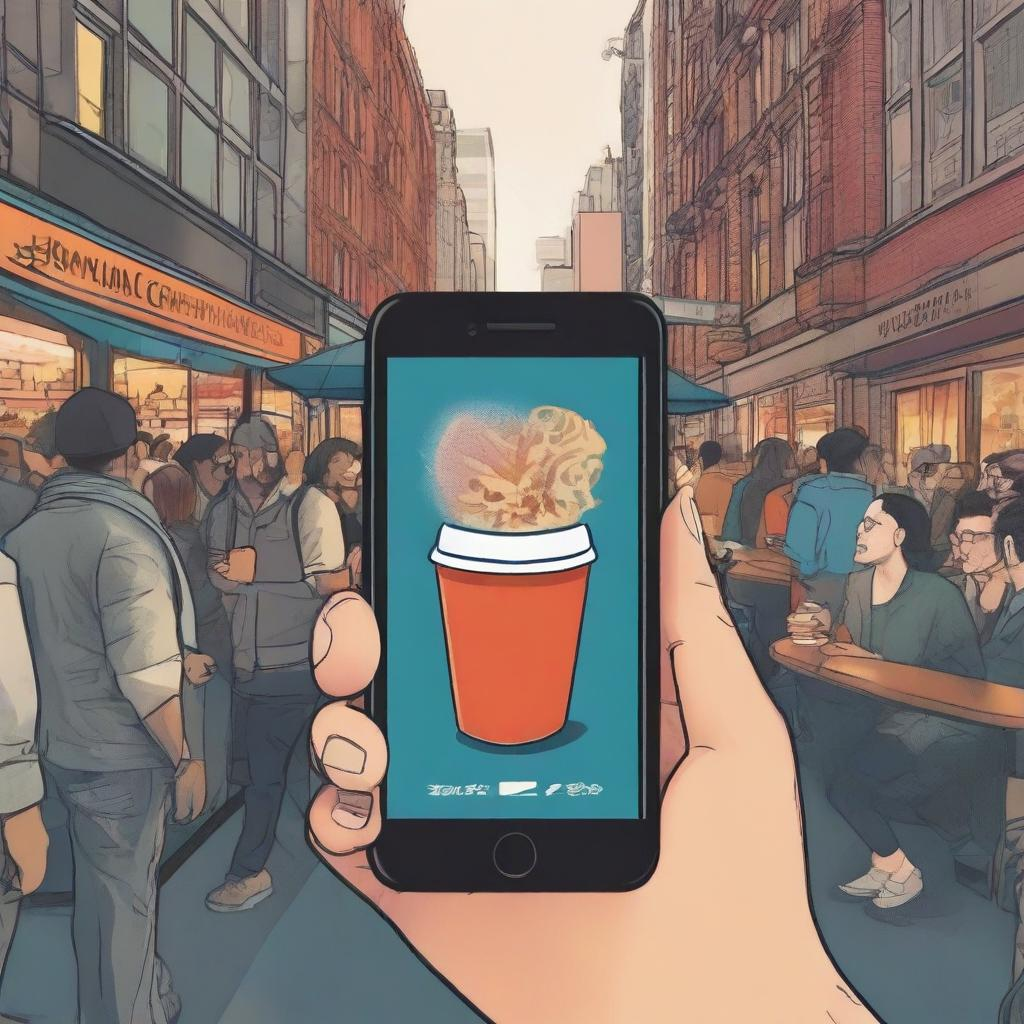TLDR
Running a restaurant can be a risky business, and one of the biggest risks is financial mismanagement. The Covid pandemic has only increased the pressure on restaurants and bars to navigate the treacherous waters of managing their finances. But there is a way to steer clear of financial disaster—by understanding and utilizing the Federal Deposit Insurance Corporation (FDIC) and insured deposits.
If you are a bar or restaurant owner, you should be aware of what happened to Silicon Valley Bank (SVB) on March 9, 2023 when it was taken over by the FDIC. This was a perfect example of how vulnerable businesses can be in the presence of financial instability. By understanding what went wrong at SVB, we can arm ourselves with knowledge on how to protect our businesses through FDIC-insured deposits. In this article, I'll explain what it means for deposit funds to be insured by FDIC and how your restaurant can benefit from it.
What Is the FDIC and What Does It Cover?
So, what is the FDIC and why should restaurants pay attention to it? The Federal Deposit Insurance Corporation (FDIC) is an independent agency of the United States government. It’s main focus is to create stability for customers of banks and other financial institutions across the country by safeguarding deposits.
The FDIC insures deposits up to $250,000 per depositor, per insured bank. In other words, if you have deposits in multiple insured banks anywhere in the US—no matter where they are located—the FDIC will insure your deposits up to $250,000 in each.
However, if your deposit exceeds this amount, you should be aware that it may not be fully protected. While the FDIC can cover uninsured deposits with approval from the Treasury Secretary under special circumstances, it’s not always possible or guaranteed. This is something restaurants should keep in mind when considering where to put their money.
The Story Behind the SVB Bank Collapse
This past weekend Silicon Valley Bank, the 16th-largest bank in the US, suddenly went under. This is a huge shock to many of their customers—mainly startups and tech-centric companies—and they were understandably worried.
So what happened? When the bank encountered financial difficulty, the FDIC (Federal Deposit Insurance Corporation) was appointed by regulators to take possession of all deposits at the bank. This essentially meant that all money invested was frozen in order to protect it from any further losses.
Although Silicon Valley Bank ultimately collapsed, customers of this particular bank were able to recover their funds due to the FDIC coverage. The FDIC's actions helped to limit how much people lost and offers a degree of solace for everyone affected by the collapse.
How to Protect Yourself From Bank Runs
You may be wondering: how do I know if a bank is FDIC-insured? And how can I protect myself from a bank run like the one at SVB?
The FDIC can provide you with peace of mind when it comes to banking. That's because the FDIC provides an insurance policy for your deposits if your bank should fail, and it will guarantee these deposits up to $250,000 per account. Not only that, but in certain cases the FDIC can guarantee deposits beyond the $250,000 limit.
The best way to protect yourself against financial disaster is by making sure your bank is covered by the FDIC. You can easily confirm this by visiting their website and checking out their “Bank Find” search tool. This will give you all the information you need to avoid a similar disaster to SVB and ensure that your money is safe.
Additionally, if a customer’s bank were to collapse they could be transferred to what's known as a “bridge bank” set up by the FDIC. A bridge bank is a temporary institution created to provide financial services until an appropriate long-term solution can be found for them. This should give you some peace of mind knowing that even in case of failure, you won't lose access to your funds instantly - giving you time to move them somewhere else with more confidence.
How to Make Sure Your Deposits Are Covered Up to $250,000 by the FDIC
Making sure your deposits are covered up to $250,000 by the FDIC is easy to do. Here are a few simple guidelines:
- Know your deposit limits. Make sure you know exactly how much money you have in each bank account before submitting a deposit. The FDIC only covers deposits up to $250,000 per customer, so any deposits larger than that will not be insured by the FDIC.
- Check on your limits regularly. Over time, you may have deposited more than $250,000 into one or more of your accounts, so it's important to monitor all of your accounts for total deposits over the limit. It's also important to note that if you have more than one account with the same bank (business and personal accounts), for example, those balances are combined for FDIC coverage purposes. If that combined balance exceeds $250,000, then any amounts above it will not be covered by the FDIC.
- Consider an insurance policy from a private company. For depositors with more than $250,000 with the same bank, private companies do offer additional coverage—and while such policies can protect against losses and provide expedited recovery times in times of need, they come with additional fees and considerations that must be carefully considered prior to signing up for coverage.
Tips for Choosing the Right Regional Bank
When searching for the right regional bank to partner with your restaurant business, here are some tips to keep in mind:
- Check the FDIC Status - Make sure the bank is FDIC insured, so you can be sure your deposits are safe. You want to know that if something happens to the bank, then your deposits are covered, usually up to $250,000.
- Choose a Strong One - Look for a solid institution that's reputable and financially stable. Check its financial ratings and other consumer reviews before opening an account.
- Understand How It Works - Ask questions about the bank's processes and find out how it plans to protect customers' deposits in case of financial disaster—become familiar with what happened during the SVB Bank collapse so you can learn from it.
- Pay Attention To Fees - Before opening an account, review any potential fees or restrictions so you can avoid any unpleasant surprises down the road. Make sure you understand what those fees cover and how they compare with other banks' rates.
These steps will help you find the right regional bank for your restaurant needs and ensure that your restaurant's finances are secure if something should happen to it in the future.
Other Financial Services Beyond Insured Deposits
The FDIC isn't just about insured deposits—it also provides other financial services. The most important one for your business is the deposit insurance policy. This policy means that if one of your customers deposits money into your account, the FDIC will cover it up to $250,000 per depositor. It can also provide access to other financial services, like loans and lines of credit.
Additionally, the FDIC can come to the rescue if a financial institution fails due to mismanagement or negligence. For example, in 2016 the Silicon Valley Bank collapsed due to misalignments between their deposits and capital base, meaning that more than 85% of their deposits were uninsured. Thankfully, the FDIC stepped in and provided funds from its Deposit Insurance Fund (DIF) to protect uninsured deposits. This is possible if three agencies—the Treasury Secretary, Federal Reserve Board of Governors and Director of Federal Deposit Insurance Corporation (FDIC)—agree that it's necessary for protection.
By understanding how the FDIC works and being aware of its other financial services, you can protect your restaurant from potential financial disasters like the collapse of Silicon Valley Bank—and make sure you have access to the funds you need when you need them most.
Conclusion
With the recent collapse of SVB Bank and the subsequent chaos that briefly ensured, restaurants everywhere should be rethinking their banking relationships and safeguarding their deposits with the FDIC.
Whether you're opening a new business or managing your funds as an established one, understanding the FDIC and its insured deposits policy is essential to avoiding financial disaster. The FDIC provides up to $250,000 in coverage for each account holder, giving business owners peace of mind that their funds are protected.
By taking the extra time to review the FDIC's insured deposits policy, restaurants can make sure their finances are secure, no matter what other banks may be facing. With the right kind of banking relationship, you can make sure a bank run never takes your restaurant down, too.

















.svg)





.svg)
.svg)








.png)







.webp)










